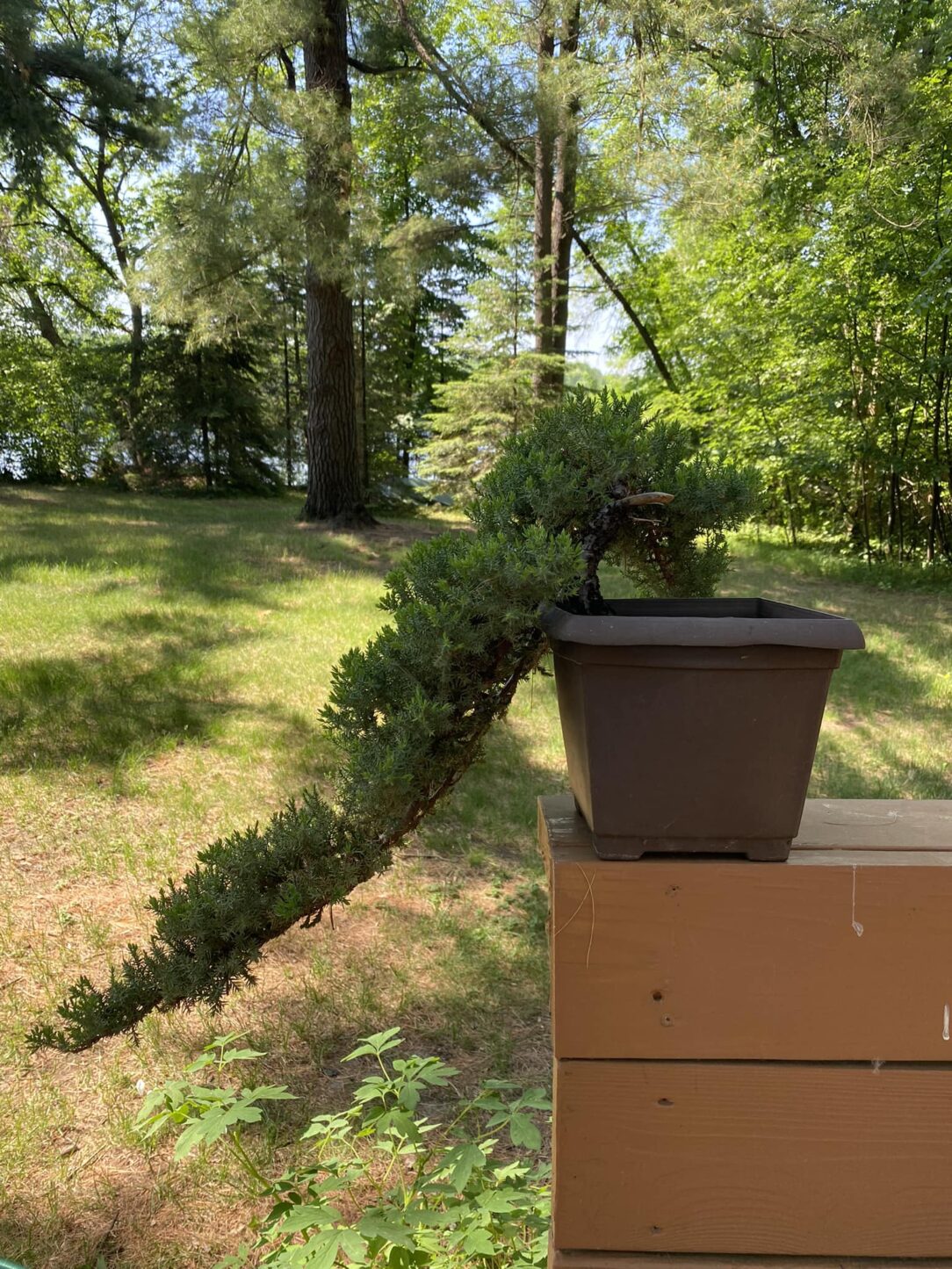Growing Bonsais

AT THE CHURCH O THE PINES, surrounded by so many glorious trees, it may seem odd to spend so much time and trouble on little trees in pots. Bonsais. But if you love trees, you love trees. And the process of helping them to grow—protecting, nurturing, shaping them—is richly rewarding. Although larger scale forestry is certainly rewarding too, it cannot be done on such personal and intimate terms. The whole enterprise is rather like raising small, green children—although bonsai children can sometimes live for centuries. With good care.
Sometimes people ask if we are not abusing or even torturing these little trees. Nothing could be further from the truth. Yes, they are in pots and cannot go wandering about the forest, but neither can the big trees. Yes, they are shaped and pruned, but gently and lovingly, while big trees are equally shaped and pruned as well—by droughts, disease, storms and deadfalls. And of course my bonsais are watered and fertilized regularly, to optimize their health and, I believe, their comfort.
Meanwhile, a tree is a tree, and contrary to popular misconceptions, almost all bonsais, like this juniper, live outdoors almost full time—enjoying the air, the wind, the sun—and in a cool, safe and protected space during winter dormancy. And yes, it is important they go dormant. Trees need sleep, just like we do.
In growing bonsais, we connect ourselves to life, grace, growth, and beauty; to the creation of art—the same sorts of art the Chinese first noticed growing on cliffs and mountainsides, and decided to try and duplicate with a human touch. It is somehow a happy thing to know that you are integrating yourself into the role that nature, with its winds and storms, uses to shape little trees on a mountain, or a rocky point or islet in the north country. And yes, I think the trees like it, too.
From the Church o’ The Pines, and from this little ‘cascading’ juniper and its friends, we wish you Good Sabbath.